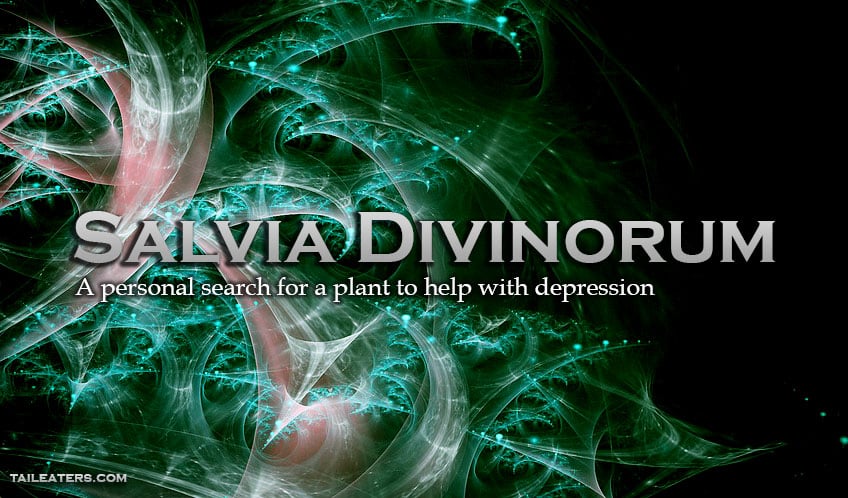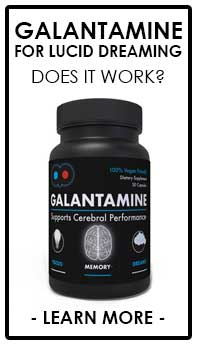
Salvia Divinorum
A personal search for a plant to help with depression
Normally I browse and read scientific articles and forum posts without keeping track of my own history and documentation of my opinions as they develop in regard to the media presented online. When it comes to reporting the first-hand experience, none of this is necessary. However, in this situation, I think I should outline some key points extracted from my near-exhaustive search on Salvia Divinorum.
I have been browsing psychopharmacological substances and their physiological responses in the human and analogous animals for some time and making my choices about what to experiment with based on testing theory with practical applications of treating depression. My research has guided me to experiment with Salvia and continue to learn about the benefits of this plant.
Salvia Effects on The Mind
In my experience, Salvia has shown me things that I would ordinarily be afraid of seeing and teaches me a new normal for being comfortable with fearful concepts. It’s like a nightmare you can never forget, one that is so vivid that it helps you to make sense of how to convert the every-day nightmares of the human event-related waking state into an organized and peaceful reality that is fine-tuned to display coincidence-rich to the equivalency of serendipitous-lucid-dreaming. It’s not to say that the reality-breaking nature of these altered states are closer to you in sobriety, but that the kinds of experiences available in lucid-dreaming become day-light-obvious in their metaphysical interpretations, a single night of dreaming and a full day to record the thoughts post-experience can lead to months worth of daily work to integrate the ideas. Some ideas are so life-changing that one can become a new person by only applying a single medicinal-belief of a rigid mindset.

People discuss “letting go” as a thing to do in psychonautic exploration, in psychedelic states, in Buddhism and other places. If one holds onto this mindset, it can be the perfect base-layer for planting seeds of ideas like skepticism or peacefulness or the placebo effect. The fruits of these seeded ideas can be schizophrenia-style paranoia, or psychiatry-style-paranoia-of-paranoia (being afraid that you might have paranoia), or the ability to do a heart chakra meditation and smile without any effort or reason other than for itself. It seems that Salvia provides some insight into this.
Kappa Opioid Receptors
Salvinorin A hits kappa opioid receptors in the periaqueductal grey (responsible for pain control) and stria terminalis (responsible for converting fear into biochemical responses (ie. monitoring anxiety to threats)), the cerebellar vermis (body posture and fine-tuned movement) and of course the hypothalamus (temperature, hunger, sleep, thirst, exhaustion, attachment behaviours and circadian rhythms). Significant activation of the auditory, sensory and frontal cortexes was also observed in both hemispheres. Which is what, if it is what it looks like, full experiential distortion; another reality. Additionally, Salvinorin A, as well as LSD, amplify dopamine D2 receptors, so specific types of pleasure are heightened. This idea that Salvia heightens consciousness has lead me to another theory of mine, that the only way for consciousness to develop forwards in evolution is if consciousness becomes more capable of visualizing detail. This amplification through Salvia is just a small example of that.
Health Benefits of Salvia
Salvinorin A has a reported reverse-tolerance whereby the more times you smoke it, the less you need to break through. It seems as if it is moving a baseline consciousness closer and closer to repeatable and consistent changes in the default mind-state of a human consciousness; the equilibrium state or membrane receptor sensitivity seems to be increasing toward the psychedelic continuum. This idea has lead me to my current hypothesis: infrequent consumption of Salvinorin A increases the frequency of psycho-experiential reports of altered states during hypnagogia and holotropic breathwork. The elusive “dream herb” that people ask about and get the answers of things like mugwort and calea, mullein, and blue lotus, seems to be precisely indicated by strong extracts of salvia, smoked until the reverse tolerance develops to work on even plain-leaf. Ultimately this would increase the potency of a per 500 microgram breakthrough equivalent experience to something requiring only like a 5 microgram dose to breakthrough, much less than even LSD, the strongest effect of a substance per unit of mass.

Salvia has been shown to help with depression long term.
The reverse tolerance of Slavia makes it ideal for long-term use as it requires less and less in order to have the effects desired. It also indicates that the plant has less potential for abuse. Additionally, in lighter doses, it produces no hallucinations, although amplifies sounds, balance, touch, and vision. Salvinorin A is also a moderate anti-inflammatory and does not produce euphoria, cognitive deficits, or changes in vital signs. and research from 2016 suggests it’s an ideal candidate for the treatment of major depressive disorder. This would make Salvia an ideal candidate to microdose with.
Salvias Evolutionary Appeal to Animals
An extended form of my theory is that in evolutionary situations where a plant-food produces bioactive chemical constituents that affect an animal consumer, the animal tends to adapt towards having a positive physiological response to the bioactive chemicals, because it is more beneficial to both organisms than for the plant to produce a negative physiological response in the animal, diminishing its chances for survival. Once the adaptation settles in for positive effects, eventually an adaptation arises for endogenous production of the same or similar bioactive chemicals, which, now they have a positive physiological response, will have a positive chance for increasing the survivability of the animal organism, and with it, the plant’s adaptation is made redundant, and disappears until a novel bioactive compound is produced that is begun to be adapted to by the consuming animal organism. In this way, adaptation can prepare multiple steps in advance before acquiring a new biochemical into its internal production line. And if not, it is possible to occur anyway with beneficial genetic engineering increasing the chances of information conservation in the future scenarios.
Animals Get “High” just like humans do
Selecting just how much, just what receptors, and just where they are produced in the human brain leads to the development of the model organism of consciousness into creatures with a consciousness level of perhaps being aware of the entire universe, or however we might choose to measure the ability of consciousness.
I feel like I have gone on too long, but hope that my personal views on Salvia can help others see the potential in this plant. Salvia is very non-addictive, and has no abuse potential, is an ideal candidate for treating any underlying depression. My fingers are crossed that soon I’ll need so little of it that I can almost essentially acquire an immunity to depression thanks to the price per dose of such a powerful physiological response. What I see with Salvia is almost as if my reality is made alive with only more of me housed externally, as though all experience arises from a core source of totality, you and I are that, and what we see is just a piece of a shattered mirror of what, in its own perspective, is always whole.
Jack has a background in Biotech Engineering and currently writes articles on the critiquing of science amidst the information ‘singularity’.
Join the Discussion
Want to discuss more about this topic and much more? Join our discussion group online and start exploring your consciousness with others like yourself



Recent Comments